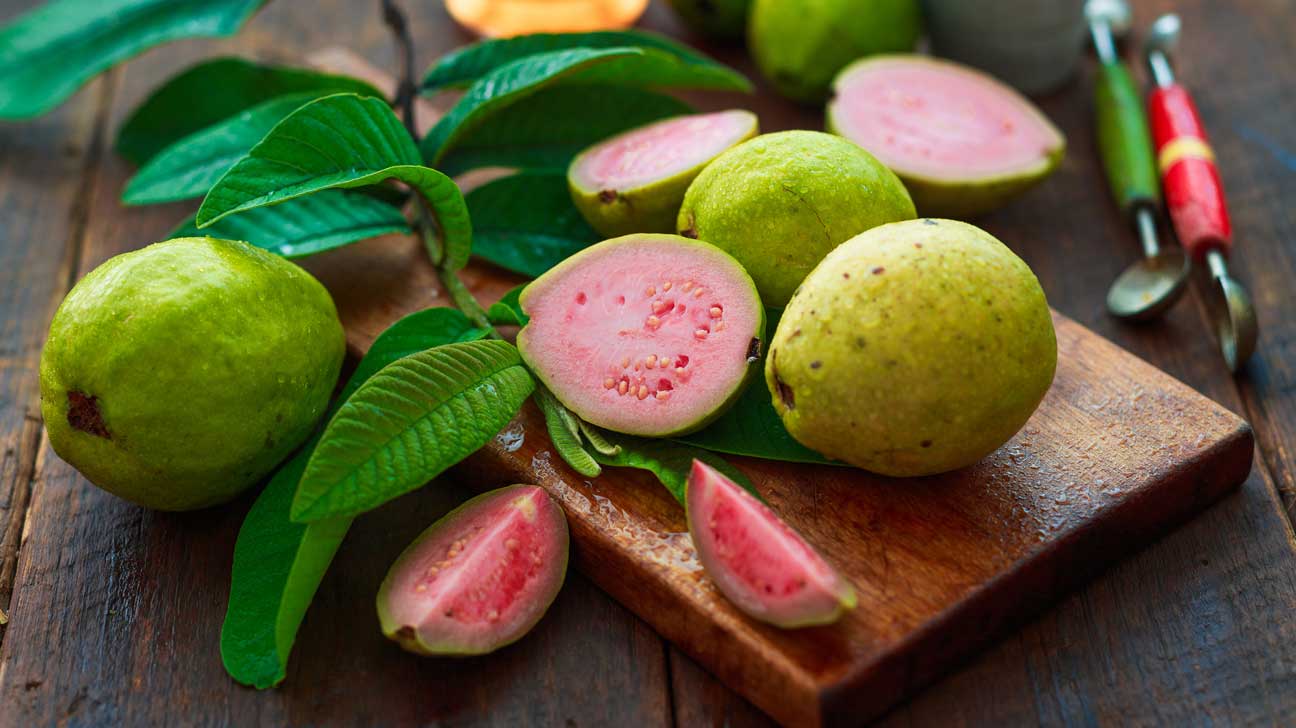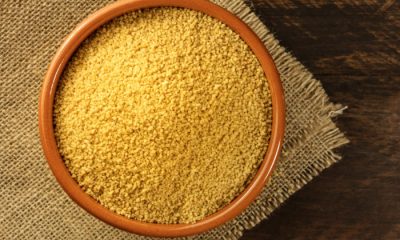Health
How to make cinnamon tea

Discover how to make cinnamon tea.
Preparation of the recipe: 5 min
For: 2 people
Recipe # 1: The cinnamon tea recipe
List of ingredients :
•1/2 l of water
•5 g of Ceylon cinnamon (1 tablespoon of cinnamon powder or 5 g of sticks)
•Optional: 1 tablespoon of tea and 1 tablespoon of honey
Preparation of the recipe :
•Boil the water, once boiling, put the tea and cinnamon to infuse.
•Cover and let steep for 5 minutes.
•Filter, and add honey if you wish.
•For an iced tea, let cool then put the tea in the refrigerator for at least 1 hour.
Why drink cinnamon tea?
Brewing cinnamon in hot water is the best way to benefit from the properties of cinnamon, which is why it is both an effective and enjoyable way to consume cinnamon.
If you eat it frozen, it will also be refreshing, perfect for the hot season. This is the best way to go to accompany a diet for example or to fight against type 2 diabetes.
Recipe n ° 2: Cinnamon and bay leaf tea
List of ingredients :
•1/2 l of water
•1 tablespoon of tea (green or black)
•1 tablespoon of cinnamon powder (about 5 g)
•6 fresh bay leaves
•Optional: 1 tablespoon of honey
Preparation of the recipe :
•Boil the water, once boiling, put the bay leaves to infuse with the tea and cinnamon.
•Cover and let steep for 5 minutes.
•Filter and serve, being careful not to burn yourself.
Why drink cinnamon and bay leaf tea?
This tea is a good way to benefit from the virtues of cinnamon for general health, but it is often consumed for weight loss.
Indeed, whether it is through tea, cinnamon or bay leaf, the drink has diuretic and purifying properties. It facilitates the elimination of accumulated fat, in parallel with a healthy and balanced diet.
To learn more, see our article on cinnamon for weight loss.
As for bay leaf, it is an aromatic and medicinal leaf with digestive and diuretic properties which stimulate the expulsion of liquids and toxins from the body.
It is also a plant with calming and sedative properties that helps relieve states of stress and anxiety, states which often lead to snacking or an unbalanced diet.
Effective against bloating and constipation, bay leaf allows the body to better absorb nutrients.
Recipe # 3: Cinnamon Lemon Tea
List of ingredients :
•1/2 l of water
•1 tablespoon of tea
•1 tablespoon of cinnamon powder (about 5 g)
1/2 lemon
•Optional: 1 tablespoon of honey
Preparation of the recipe :
Boil the water, once boiling, put the tea and cinna to infuse.
Cover and let steep for 5 minutes.
Why drink cinnamon and lemon tea?
This tea is a great way to gain from the benefits of cinnamon for general health, but it is often consumed to detoxify, regulate blood sugar levels, aid digestion, lose weight and regulate menstruation.
The virtues of the cinnamon, lemon and honey association are impressive, ideal for winter, and the association of the 3 ingredients is often used in traditional medicine to relieve many ailments.
In addition to the health benefits of cinnamon, the added benefits of lemon make the list as long as the arm.
Let us mention all the same its virtues against hypertension, against respiratory problems, against kidney stones, against arthritis pain and rheumatism, against asthma, against diarrhoea, against throat problems, against headaches. head, etc. Lemon is also a concentrate of vitamins and minerals essential for good health in general.
Health
Managing Chronic Pain: Integrative Techniques for Wellness

Key Takeaways
- Understanding chronic pain and its various treatment options is essential for effective management.
- Lifestyle factors, including diet, exercise, and sleep, can significantly influence chronic pain.
- Integrative techniques, including medical treatments and complementary therapies, are vital in tackling pain holistically.
Understanding Chronic Pain
Chronic pain is a persistent type of pain that can last for months or years and may be caused by various factors. In contrast to acute pain, it can continue even after the original injury has healed. Healthcare professionals evaluate a patient’s self-reported pain level and the impact it has on their daily activities to address the complexity of chronic pain. When the underlying cause is unknown, multidisciplinary approaches are necessary to relieve pain.
The Role of Lifestyle in Chronic Pain Management
In the quest for relief, many find solace in discovering a reputable pain clinic near me that employs a range of treatment options. Diet and chronic pain have a significant, if not entirely understood, relationship. Pro-inflammatory foods, excessive caffeine, alcohol, and refined sugars tend to exacerbate inflammation, potentially intensifying pain. On the other hand, anti-inflammatory foods such as fatty fish, greens, nuts, and seeds may help reduce inflammation and, as a result, pain. Consistent hydration and balanced meals can support the body’s natural coping mechanisms. Creating a personalized diet plan with a nutritionist or dietician can be a proactive step in managing chronic pain through lifestyle. Being physically active is critical to managing chronic pain.
Medical Treatments for Chronic Pain Relief
Medications often serve as the first line of defense in chronic pain management. NSAIDs, for example, are commonly used to alleviate inflammation and pain. Antidepressants and anticonvulsants can also be prescribed for their pain-relieving properties. Caution must be taken, especially with more robust, potentially habit-forming medications such as opioids; these should only be used when necessary and with a strict plan for monitoring and tapering. Furthermore, patients are encouraged to ask their healthcare providers about potential side effects and interactions with other medications.
Beyond pharmacological measures, interventional treatments like nerve blocks, epidural steroid injections, and radiofrequency ablation offer non-surgical pain relief for various conditions. In some cases, these targeted procedures may provide lengthy periods of relief and help patients engage in physical therapy and rehabilitation more effectively.
With chronic pain being such a dynamic and individualized issue, research into new therapeutic methods is ongoing. Treatments such as platelet-rich plasma therapy (PRP) and stem cell injections are emerging as potential alternatives. They focus on repairing damaged tissues and reducing pain naturally. However, consulting with experienced pain management specialists before considering these advanced options is essential.
Psychological Approaches to Pain Management
Chronic pain has deep psychological and emotional roots in addition to physical causes. Therapies like Cognitive Behavioral Therapy (CBT) address the thought patterns that can worsen pain perception and decrease the quality of life. Patients can learn to change these thoughts, engage in positive behaviors, and develop strategies to manage setbacks in their pain journey. Biofeedback is a technique that measures and provides real-time data on bodily functions, such as heart rate, muscle tension, and skin temperature. It helps patients gain voluntary control over these functions, and mastering such autonomic processes can improve pain management and give a greater sense of personal power.
Emotional well-being is integral to pain management, as negative emotions can intensify pain perception. Healthcare providers may recommend therapy sessions to address the psychological impacts of chronic pain, helping individuals cope with associated feelings of frustration, depression, or isolation. These therapeutic approaches highlight the importance of treating chronic pain as a comprehensive, biopsychosocial condition.
Navigating the Healthcare System
The complexity of healthcare systems can add a layer of stress for those managing chronic pain. Advocacy is critical. Patients must feel empowered to ask questions and make informed decisions regarding their care. Understanding how health insurance works, what treatments are covered, and how to access necessary medications is imperative. Healthcare professionals can also be invaluable allies in helping patients navigate these systems and ensure that they receive appropriate and timely care.
Looking Ahead: The Future of Pain Management
As we learn more about pain, there is hope for better pain management through new treatments and technologies. For example, virtual reality therapies can help distract patients from pain and reduce its intensity by immersing them in relaxing environments. Scientists are also exploring innovations in pharmaceuticals, non-invasive brain stimulation techniques, and cognitive behavioral therapy apps to treat chronic pain more effectively. Additionally, personalized medicine, which considers an individual’s genetic makeup, lifestyle, and environmental factors, is set to revolutionize pain management.
Health
Health benefits of djeka leaves or ogyama leaves

Table of Contents
Health
Benefits of guava leaves Sensually

Table of Contents
- Benefits of guava for Sensualty
- Guava is a tropical fruit with a very particular sweet and sour taste. Known for being an excellent fighter against cancer, this fruit can also help you in the area of your relationship. Guava leaves is said to improve Sensuality, do you want to know why?
-
Benefits of guava for Sensuality
To begin with, guava contains a large amount of vitamin C, which allows the Sensual glands to function perfectly. On the other hand, it is rich in antioxidants, which prevent diseases of all kinds, including Sensual ones.
We can not only consume the fruit itself but also the leaves of the plant since they contain analgesic properties – with pain there is no good relation – and anti-inflammatory properties – for example, inflammation of the prostate can cause a variety of Sensual dysfunctions in men. , beyond the clear health problems.
The leaves also contain antioxidant properties that fulfill the same function as those of the fruit.
Copper, one of the nutritional elements that guava provides, improves the production and absorption of all hormones in the body, including Sensual ones.
- As if that were not enough, magnesium allows us to be more relaxed, both muscularly and mentally: we already know that stress decreases libido and generates other Sensual problems.Without a doubt, guava is an aphrodisiac: it stimulates blood circulation in the genital area, making it easier to have and maintain an erection in the case of men, as well as increasing arousal and sensitivity to touch in women. All of this makes it easier to have an orgasm.Although it is a fruit that is not recommended to consume as a natural remedy during pregnancy and lactation, there is no chance that it will have any adverse reaction or interaction with other medications or herbal remedies. It is recommended not to eat guava on an empty stomach, as it can be a bit heavy.
Guava leaf tea recipe
You need:
30g guava leaves
2 glasses of water
- Sweetener to taste (can be honey)InstructionsHeat the glasses of water together with the leaves and boil for 20 minutes over low heat.
Let cool and strain the leaves.
Sweeten and serve.
Guava Juice Recipe
To make a guava juice to improve Sensuality you will need the following ingredients:
- • 1 cup guava peeled and chopped• 1 spoon of sugar• ½ cup cold water
• Ice cubes
• grated ginger (optional)
Place all ingredients except ice in a blender until smooth. Filter well and add a few ice cubes to make it cooler.
- If you want you can strain it, put it back in the blender with the ice, and make a kind of granita. You can also add frozen berries instead of ice to have a juice with a particular flavor.If you want to make a smoothie, you will need:• 1 ½ cup guava juice
• 5 tablespoons of coconut milk
• 1 ½ cup vanilla ice cream
Place everything in a blender and beat, it will be left with a thicker consistency and a smoother flavor. Serve very cold.
-

 Food2 months ago
Food2 months ago8 shocking benefits of leek juice and side effects
-

 Food2 months ago
Food2 months ago10 + Benefits of carrot juice and side effects
-

 Health2 months ago
Health2 months agoBenefits of guava leaves Sensually
-

 Health2 months ago
Health2 months ago10 shocking health benefits of Canary seed milk
-
Weight Loss2 months ago
Chrissy Metz Weight Loss Secret (2022)
-

 Health2 months ago
Health2 months ago7 health benefits of cashew leaves and side effects
-

 Weight Loss2 months ago
Weight Loss2 months agoKelly Osbourne weight loss 2022
-

 Food2 months ago
Food2 months agoHealth benefits of gongolili or vetiver and side effects








